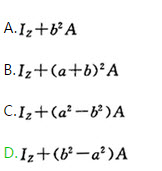Every year, 2,000 American lives are saved by the selflessness of others. These are the bone marrow donors who give the gift of life to patients fighting deadly diseases such as leukemia, lymphoma, and aplastic anemia. That’s the good news. The bad news is that thousands more die each year because not enough people have signed on to the registries that would help the ill find a suitable match for a transplant.
Bone marrow or stem-cell transplants are usually a last resort, intended for those whose illnesses have not responded to traditional treatments such as chemotherapy or radiation. How do they work We all store a special type of cell in our bone marrow called stem cells. These primitive cells give rise to the three types of blood cells: red, white and platelets. Everyone’s stem cells have certain genetic characteristics or markers that make them unique from others. Despite this uniqueness, there are some shared characteristics between people. This is important, because a patient’s immune system will reject blood or organs received from someone else if they do not share sufficient similarities.
Family members, especially siblings, are always the first to be considered as donors, because there’s a greater chance that the genetic markers on their cells will have enough in common to prevent rejection after transplantation. In many cases, however, a familial match can’t be found and then the search begins for an unrelated donor. These donors typically come from a pool of people who have already signed up on a donor registry in the event that their cells match a needy recipient.
Once the lab has verified a match between donor and recipient, the next phase starts. The patient is given radiation or chemotherapy to kill the unhealthy cells. Healthy cells are harvested from the donor — either extracted from the pelvic bones or taken from the arm in a way that is similar to having blood drawn — and prepared in a laboratory. Once they’re ready, they’re given to the patient through a vein — the same way as one would receive a blood transfusion. Once these transplanted donor cells get settled within the patient’s bone marrow, they make the healthy red blood cells, white blood cells and platelets necessary to support life.
One of the major problems currently faced by transplant centers is that while bonemarrow transplants can cure more than 70 different diseases, there aren’t enough donors on the registry to treat the more than 3,000 patients awaiting transplants. The National Marrow Donor Program, the largest registry in the country, has approximately 4.8 million adult volunteer donors, but that isn’t nearly enough for the thousands who need transplants.
Why isn’t a pool of more than 4 million donors isn’t enough to cover 3,000 needy patients Here’s the reason: in the vast-majority of cases, finding a suitable match isn’t easy. Because we are unique individuals with a variety of ancestral backgrounds and integration patterns, finding someone similar to us is a major task. In the end, it comes down to a numbers game — the more potential donors listed on the registry, the greater a chance of finding a match, especially for those with unusual genetic characteristics.
Who is considered the best donor for bone marrow transplant
A.Parents.
B.Brothers and sisters.
C.Registered donors.
D.Healthy donors.



